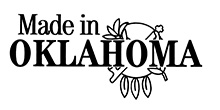Goats
My main reason for wanting the milk goat was for the milk, just for us to drink. I was raised on a dairy farm and love raw cow’s milk, but I knew I didn’t want to have to milk a cow twice a day. I only milk my nannies once a day. I shut the babies up in the barn in the evening and milk the nannies before turning the kids out. The nannies know to hold milk back, so you don’t have to worry about the kids’ going hungry.
Goats are members of the Caprinae family, along with sheep and antelopes. These animals first lived in Africa, where they provided milk, meat, fiber, and skins, as well as sacrificial offerings.
Our goats are Nubian, Alpine and LaMancha goats. They provide milk for us to drink, and to make into butter, cheese, yogurt, ice cream and goat milk soaps and lotions.
The Anglo-Nubian breed, a cross between the Old English Milch Goat and the Zaeiby and Nubian bucks imported from India, Russia and Egypt, originated in England . They are referred to as simply Nubians in the United States and Canada.
Nubian are easily recognized by their soft drooping ears and Roman noses. Nubian goats are often referred to as the “Jersey” of the dairy goat breed because they produce such a creamy milk with a high butterfat and protein content. On the average, this breed produces less milk than other dairy breeds. This milk is ideal for creating cheese, yogurt, ice cream, soap and even butter. They can also live in very hot climates which is another reason we decided on the Nubian breed when we decided to get dairy goats.
Markings of a Nubian can be any color. Their temperament is sociable, outgoing, and VERY vocal. They are very intelligent and know what they like and dislike. Once shown the correct way of being let out of pen to be milked, a Nubian will walk itself, get on the stand and wait to be milked.
Alpines originated in the French Alps. They are heavy milkers with an average butterfat. They are hardy, adaptable animals that thrive in any climate while maintaining good health and excellent production. These are some of the reason we chose the Alpine breed.
Alpines have erect ears and have a dish-face. They are multi-colored and have no set marking. They are good with children and make good pets.
The American Lamancha, or more commonly, simply Lamancha or LaMancha, were first bred in Oregon by Mrs. Eula Fay Frey. They are also known for high milk production and comparatively high butterfat content. Their milk also has a sweeter taste than the other goat milk we have tried. These are some of the reason we decided on the LaMancha breed.
LaMancha goats are a very distinctive goat breed easily recognized by their apparent lack of, or much reduced external ears. There are two type ears they can have: Gopher ears are very small and appear to be ‘shriveled”. There are no folds and the external ear must not exceed 1 inch. This is the only type of ear which will make bucks eligible for registration. Elf ears are a maximum length of 2 inches. The end of the ear must be turned up or turned down, and cartilage shaping the small ear. They are medium in size, They are the only breed of goat that was developed in the United States and are usually calm, quiet and have a gentle temperament. They can be any color.
So now you know a little bit about our goats and why we chose the breeds we have.
Llamas
Why llamas? My answer is “why not? Llamas are gentle, beautiful creatures. Their wool makes luxurious yarn and their ‘llama beans’ are a terrific natural fertilizer. I will be honest, the reason I wanted llamas is because I thought they would make neat ‘lawn ornaments’. I wanted people to drive by and say, “was that a llamas?” and it has worked!
Llamas are members of the Camelid (camel) family. Ten million years ago the first camelids lived in the central plains of North America, not too far from GraysLland Acres. Some of them headed to South America about 2.5 million years ago, where their descendants became llamas. Others relocated to the Middle East, where their descendants became camels. The end of the Ice Age signaled extinction for the camelid in North America.
Llamas were domesticated in Peru over 5,000 years ago, making them one of the world’s oldest domestic animals. They worked for the herdsmen as beasts of burden, and also provide meat, wool, hides for shelter, manure pellets (or llama beans) for fuel, and even sacrificial offerings. Llamas are still important to the agricultural economy of the remote highlands of Argentina, Bolivia, Chile and Peru. There are about 7 million llamas and alpacas in South America.
In the United States and Canada there are an estimated 125,000 llamas and 11,000 alpacas, making the llama a viable agricultural entity. Some llamas are kept as guard and companion animals, but the main products of llamas in North America are fertilizer (llama beans) and wool. The wool of llamas is very fine, soft and lanolin-free, comparable in fineness to chinchilla and merino wool.
Llamas can live 20-30 years, with good care. They are very social animals and live with other llamas in a herd. They are intelligent and can learn simple task after a few repetitions. When used as pack animals they can carry 25-30% of their body weight for 5-8 miles. They are make good guard animals for other types of livestock.
Llamas are very social, so our llamas are happy living together. It is such a joy to hear them humming to each other, communicating in their own way. Some of them will act aloof, but their curiosity gets the better of them when visitors talk to them.
I shear my llamas in the spring, for two reasons. The most important reason for the llamas is that it keeps them cooler in the Oklahoma summers. The important reason for me is that when I shear them I get this wonderful fiber that I can make into yarn and then I can make wonderful hats and scarves and sweaters from my own llamas’ wool.
Even without all their wool, llamas need to cool off sometimes in the summer. Since I do not have a pond for my llamas to get in to when they need to cool off, I use wading pools. It is fun to watch them try to lie down in the pools, or to put their front feet in one and their hind feet in the other. My gelding has started standing in the water tub.I still haven’t figured out how he gets all 4 feet in, but he does. This means I have to change water daily. I also have a misting system up in their loafing sheds and if the temperate is going to be over 90 degrees I turn it on. They know the sound and will come in and put their faces up to catch the spray. This might not be necessary, but it is fun to watch them cool off.
Llamas ears are long and slightly curved inward characteristically known as “banana” shaped. Their feet are narrow, with toes being more separated than in the camels, each having a distinct plantar pad. Their tail is short and fiber is long, wooly and soft.
Female llamas reach puberty at about 12 months, males do not become sexually mature until around 3 years of age. Llamas have an unusual reproductive cycle for large animals. Female llamas do not go into “heat”, through the act of mating, the female releases an egg and is usually fertilized on the first attempt. Gestation is 11.5 months (350 days).
Female llamas or Dams, do not lick off their babies, as they have an attached tongue which does not reach outside the mouth more than half an inch. They will muzzle and hum to their newborns.
This is a little bit of information about llamas. You can check out our blog to learn more.




